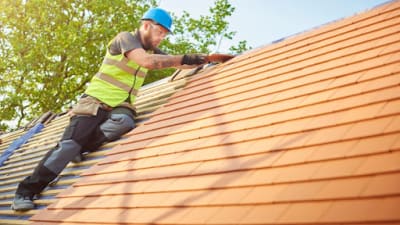Work with an professional Toledo Roofer for commercial roofing projects.
Work with an professional Toledo Roofer for commercial roofing projects.
Blog Article
Just How to Assess Different Roof Alternatives for Your Building Needs
Assessing roof options for your building requires a thorough method that thinks about numerous elements such as the planned use the structure, local environment problems, and material qualities. It is necessary to evaluate the advantages and downsides of different roof covering types, from asphalt shingles to metal and clay floor tiles, while additionally factoring in initial prices and long-term upkeep. In addition, recognizing energy performance and visual appeal can affect your decision. As you consider these considerations, one question remains: which aspects will ultimately lead your choice for a sustainable and aesthetically pleasing roof covering solution?
Analyzing Your Building's Requirements
To properly assess roof options, start by completely assessing your structure's requirements. Beginning by considering the structure's meant use, as different structures might demand differing roof covering requirements. Domestic roofing systems commonly focus on aesthetics and insulation, while industrial buildings might concentrate on longevity and load-bearing capacity.
Next, assess the regional environment problems that will influence roof covering efficiency. Elements such as temperature level variations, rainfall levels, and wind patterns can influence product selection and layout. A roof that masters a pleasant climate may not perform too in locations prone to hefty snowfall or severe warmth.
Additionally, examine the architectural integrity of your building. Make certain that the existing framework can support the selected roof covering materials, especially if thinking about heavier choices. It is additionally crucial to examine any kind of neighborhood building regulations or regulations that may dictate particular needs for roof covering systems.

Comparing Roof Covering Products
Once a detailed evaluation of your structure's requirements has been finished, the next step includes contrasting different roof products. Each material supplies unique benefits and drawbacks, making it necessary to straighten your choice with your details demands and conditions.
Asphalt tiles are commonly acknowledged for their cost and convenience of setup, making them a popular option for residential structures. On the other hand, metal roof, understood for its sturdiness and durability, can hold up against harsh climate condition yet may come with a higher initial investment.
Clay and concrete tiles give outstanding thermal insulation and aesthetic allure, particularly for Mediterranean-style architecture, yet they call for an even more durable architectural support due to their weight. Wood trembles offer a natural appearance and excellent insulation properties but may demand extra maintenance and are vulnerable to fire dangers.
Reviewing Cost and Spending Plan
Evaluating your roof covering alternatives demands a careful evaluation of cost and budget plan factors to consider. The overall allocate a roofing task makes up a number of factors, consisting of product costs, labor costs, upkeep, and potential long-lasting financial savings. It is crucial to develop a clear spending plan prior to exploring details roof covering products, as this will assist the decision-making procedure and assist you stay clear of overspending.
Begin by obtaining quotes from several specialists to comprehend labor costs in your area. Guarantee that these estimates consist of all required services, such as elimination of the old roofing system, setup, and any kind of additional functions, like insulation or air flow improvements - Roofer. Next off, analyze the price of numerous roofing products, thinking about both initial installment prices and expected lifespan

Comprehending Energy Performance
Power efficiency click to read plays a vital function in the choice of roof products and systems, considerably affecting both energy usage and total convenience within a building. An appropriate roofing can boost thermal efficiency, lowering the demand for home heating and cooling systems, which in turn decreases energy bills and decreases ecological effect.
When assessing roof options, consider materials that mirror rather than take in warm. In addition, appropriate insulation and air flow are vital to maximize the power performance of the whole roof system.
An additional crucial element is the roof's durability and upkeep requirements. Durable materials that require much less constant substitute contribute to long-term power financial savings. Additionally, the power effectiveness of a roof can also be analyzed through its conformity with well-known sustainability ratings such as power CELEBRITY or LEED.
Taking Into Consideration Visual Charm
A roofing's visual charm dramatically affects the total look of a building, complementing its Look At This architectural style and enhancing visual charm. Roofer. When evaluating roof alternatives, it is crucial to take into consideration how the selected product, shade, and layout will harmonize with the existing framework and neighborhood. A properly designed roof covering can raise also the most basic of buildings, changing them right into aesthetic centerpieces
Different roof materials provide different visual high qualities. Standard roof shingles might stimulate a classic appeal, while steel roof can present a contemporary, sleek look. Furthermore, the color of the roofing product plays a critical duty; lighter tones can make a building show up more large, while darker tones may produce a cozier setting.
Furthermore, architectural aspects, such as dormers and eaves, can improve the roofing's aesthetic effect. It is advisable to consult with expert developers or architects to make certain the selected roofing alternative straightens with the overall layout intent. Inevitably, a roofing needs to not just give useful advantages but also contribute positively to the building's visual, showing the owner's taste and the personality of the surrounding setting.
Final thought

Report this page